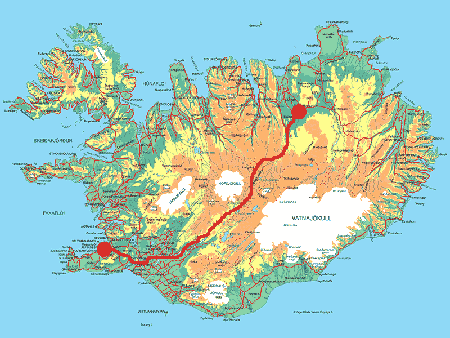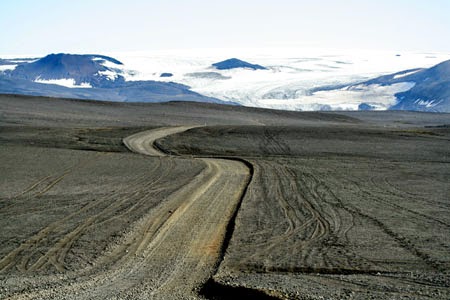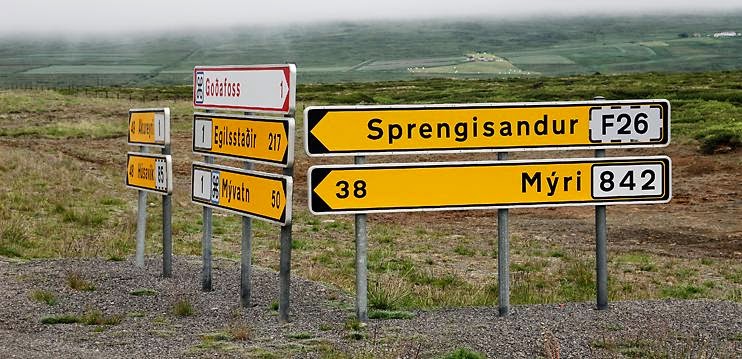Featuring the most desolate terrain found in Iceland, Sprengisandur is the bleak highland desert east between Hofsjökull – the rounded icecap marking Iceland’s geographical centre – and Vatnajökull’s northwestern front
.

In earlier times, when people were more superstitious than they are nowadays and believed in ghosts, giants, elves and outlaws, the few who dared use this route rode as fast as possible through and sometimes exhausted their horses. The word for to exhaust in Icelandic is "sprengja", hence the name of the area.

Although providing something of a corridor in Viking times between Iceland’s northeastern settlements and the summer parliament at Þingvellir, crossing Sprengisandur was always a tough journey, the desert flooded in spring with melting snow and ice, yet too dry in summer to provide any grazing for horses. Indeed, most travellers preferred to take much longer coastal roads, and Sprengisandur was eventually abandoned as a route during the thirteenth century.

Traversed today by the F26, which begins northeast of Hekla and runs some 244km to the Ringroad at Goðafoss, the Sprengisandur route remains a challenging one, whose unbridged rivers and stark scenery provide an insight into medieval Iceland’s harsh living conditions. Sprengisandur’s southern gateway is marked by Hekla, north of which is the desolate, icy plateau between Hofsjökull and Vatnajökull.

The enduring image here is of nothingness: the glaciers and mountains that fringe the horizon seem a long way off, and the space in between is filled with mile after mile of grey sand, stones and rocks that have lain untouched for thousands of years.
